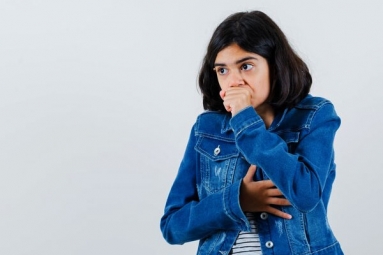
(Image source from: Canva.com)
The monsoon season brings heightened risks to children's eye health due to increased humidity and the spread of waterborne infections. This period demands extra vigilance to safeguard young eyes from common infections. Ayurvedic medicine, rooted in ancient Indian traditions, offers a natural and holistic approach to preventing and treating eye issues during the monsoon. Common eye ailments encountered during this time include:
Conjunctivitis (Pink Eye) - An inflammation of the conjunctiva, the membrane covering the white part of the eye, often caused by bacteria, viruses, or allergens, and is highly contagious.
Styes - Painful red bumps that appear on the eyelid, resulting from bacterial infection of the oil glands, causing significant discomfort and irritation.
Allergic Reactions - Eyes can become red, itchy, and watery due to increased exposure to allergens like pollen, dust, or mold, which are more prevalent during the monsoon.
Ayurvedic philosophy associates eye health with the balance of the three doshas: Vata, Pitta, and Kapha. During the monsoon, the Pitta dosha, responsible for heat and metabolism, can become aggravated, leading to increased heat and inflammation in the eyes. Ayurvedic care aims to restore the balance of the doshas through dietary modifications, lifestyle changes, and specific treatments.
Ayurvedic Approach to Childcare:
Maintaining Cleanliness: Encourage children to frequently wash their hands with soap and water to prevent the spread of illnesses. Provide each child with their own towel to avoid cross-contamination. Additionally, use eye wipes regularly to keep the eye area clean and hygienic.
Balanced Nutrition: Incorporate foods like cucumber, watermelon, and leafy greens into the diet to balance the Pitta dosha. Ensure children stay hydrated by drinking plenty of water and fluids, which helps flush out toxins. Limit the intake of spicy, oily, and fried foods, as they can aggravate Pitta and lead to inflammation.
Gentle Eye Care: Use a Triphala-based wash to cleanse the eyes and reduce inflammation. Triphala, a blend of three fruits, is known for its anti-inflammatory and antioxidant properties.
Monsoon Season Precautions: Emphasize frequent hand washing and the use of individual towels for each child. Utilize eye wipes to maintain additional cleanliness during the monsoon season.
Ayurvedic Remedies for Eye Infections:
1. Turmeric and Honey Paste: Create a paste with turmeric and honey, and apply it around the eyes (avoiding direct contact). This mixture helps reduce inflammation and combat infection due to its antibacterial properties.
2. Aloe Vera: Apply fresh aloe vera gel to soothe irritation and reduce inflammation, as it has natural cooling and anti-inflammatory effects.
3. Neem leaf extract: Boil neem leaves in water and wash your eyes with this water. Neem has strong antibacterial and anti-inflammatory properties, making it useful in treating infections.
4. Bilva leaves: Make a decoction of bilva leaves and wash your eyes. Thanks to its anti-inflammatory properties, Bilva leaves reduce eye inflammation and irritation.
Lifestyle tips to maintain eye health:
1. Get enough sleep. Make sure children get 6-7 hours of sleep every night to keep their eyes healthy.
2. Limit the time children spend in front of TV, cell phones and computers to avoid eye strain and eye dryness.
3. Safety Glasses: We recommend that you use safety glasses to protect your eyes from dust, dirt and harmful UV rays.
By incorporating these Ayurvedic practices into your daily routine, you can effectively protect your child's eyes from infections during monsoons and improve eye health.










